Did YOU watch 5ds as a kid and get weirdly invested in the grungy industrial look of the satellite, but find the junk archetype just TOO clean and nice looking? do YOU want a deck to complete your osha violation or apocalyptic scavenger aesthetic, that gives you tetanus just by looking at it? do YOU want to run an obscure rogue archetype originally put out in 2011 that nobody in their right mind would think to use on its own, and get stuck in gold 3 for weeks? well, friend, have i got the deck for you!
the scrap archetype is one that ive almost never seen anyone else use, which in my opinion is a shame because its a very fun and powerful deck to run without being oppressively strong. it excels at poking and prodding at an opponents board, dismantling and finding holes in their setup.
BOSS MONSTERS

let’s start out with your heavy hitters. your boss monsters in the scrap archetype are synchros: level 8 scrap dragon, level 9 scrap twin dragon, and level 10 atomic scrap dragon. these all have effects that remove your opponents cards from where they’re useful, in exchange for destroying one of your own. scrap dragon destroys one card, scrap twin dragon returns 2 to the hand, and atomic scrap dragon returns 3 from the gy to the deck (ideal against sky strikers!).
in addition, you have link-2 scrap wyvern, which can re-summon any scrap card from the graveyard in exchange for destroying one card of yours, AND can summon any scrap card from the deck + destroy 1 card on the field once a turn when a scrap monster is destroyed by effect. you also have level 7 scrap archfiend, but this isn’t really worth mentioning as it has no unique effect and is more difficult to summon. i personally don’t use archfiend.
all four of these cards are surprisingly easy to bring out with a dedicated scrap deck, and in my experience, twin dragon is the easier and most useful for simply clearing out a board for a single turn; returning two cards on the field to the hand is, to put it lightly, just kind of ridiculous, and gets around cards that can’t be destroyed. it also has the benefit of, if you return a monster to the extra deck, requiring your opponent to once again spend the same resources to bring it out again; combined with a negate that can’t be chained with such as dark ruler no more, and it can even shut down destroyer phoenix enforcer! strangely enough, twin dragon is also the CHEAPEST of the dragons, being SR rarity instead of UR like dragon, atomic dragon, and wyvern.
THE BREAD AND BUTTER
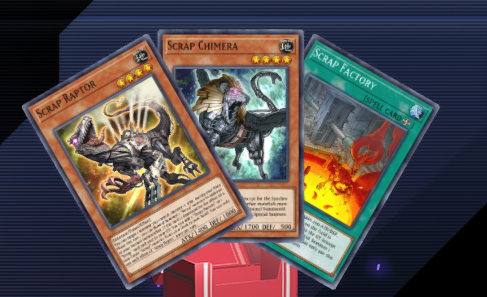
your main combo starter with the scrap archetype is scrap raptor. by targeting itself with its destruction effect, you are not only allowed to normal summon a second time that turn, you can also search out nearly any scrap monster in your deck. even if this search is negated (such as by ash blossom and joyous spring), you still have a scrap monster in the gy and another normal summon to set up defenses; most such negations only affect the search and not the additional normal summon (in master duel at least. the normal summon can be thought of as a separate resource you gain upon the destruction, rather than something raptor needs to use its effect for).
you’ll usually want to search out scrap chimera, or, if you already have chimera in your hand, scrap factory (if you have both, a second chimera is usually best). normal summoning scrap chimera will re-summon raptor from the graveyard- from here, you can bring out any level 8 synchro or link 2 monster; the best choice is usually scrap wyvern.
there are TWO cards that can search out scrap raptor, scrapyard (add any scrap tuner to your hand) and fossil dig (add any level 6 or below dinosaur to your hand). both of these are, while expensive (SR and UR respectively), unlimited, meaning you can including 3 of each, effectively dramatically thinning the size of your deck and making it that much more consistent. i highly recommend including fossil dig if you can afford it.

if you can put scrap wyvern and scrap factory on the field at the same time, you can easily set up a otk; both cards have effects that allow you to summon ANY scrap card in your deck upon another scrap card being destroyed. the combo works as follows: scrap wyvern summons a scrap monster from the gy and then destroys that same monster, triggering both its own secondary effect as well as that of scrap factory. you summon two scrap golems, one for each card, and then scrap wyvern destroys ANY card on the field (this is not optional; if your opponent has no cards, you have to destroy one of your own; set spells are best for this situation). from here, your two scrap golems can bring back raptor and chimera, or another appropriate monster; even without further summons, this is typically enough to otk an opponent on the second or third turn, but raptor and chimera can bring out scrap dragon (further 1-1 card destruction) or raptor and golem can bring out scrap twin dragon (1 card of your own is destroyed in exchange for returning two cards to the hand), both of which have at least 3000 atk if scrap factory is on the field.
KURIBOH-ESQUE LITTLE DUDES
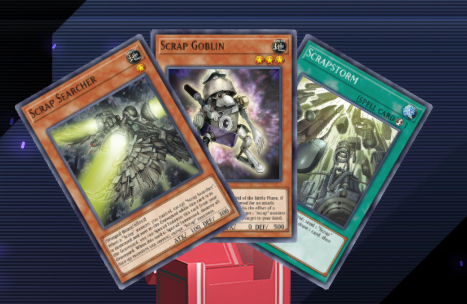
searcher has two effects; if a scrap card is destroyed by card effect, you can summon it from the graveyard (and this is NOT once per turn or limited in any way!), and when it’s special summoned, all non scrap monsters on the controlling players field are destroyed. the obvious utilities are to use it as fuel for your scrap dragon effects, or to set up further link/synchro summons (a golem, raptor, and searcher can bring out atomic scrap dragon, and you can potentially summon three searchers from a single destroyed card), but there’s another benefit due to the effect of scrap golem; you can actually summon searcher to your OPPONENTS field to activate its destruction effect. there are also some technical options you can use with effects that send searcher from the deck to the graveyard, such as scrapstorm, which allow you to effectively immediately summon it after the spells effect resolves, HOWEVER many of these have problems with ‘missing the timing’ if used in a chain. more on that later.
scrap goblin has a similar utility; it has 0 attack and cannot be destroyed in battle (unless its in face up defense mode, and only at the end of the battle phase). by summoning it to your opponents field, you can entirely bypass otherwise insurmountable boss monsters or effects that would trigger on cards being destroyed by battle (such as sky striker raye). on your own field, meanwhile, a set scrap goblin can completely tank a single attack; remember, it has to be FACE UP for it to destroy itself at the end of the battle phase (this works in master duel, so. bleh). even without this, scrap goblins unique effect of lasting an entire battle phase means it can completely block a numeron network otk or similar beatdowns, making it a great choice for a first turn set if you aren’t confident in your ability to get wyvern out.
THE REST OF THEM
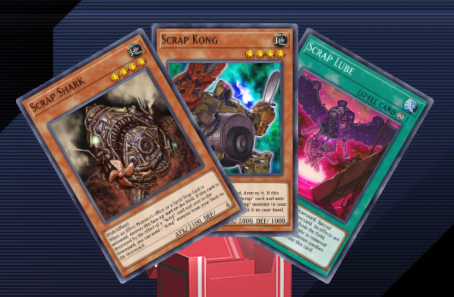
many other scrap monsters are mostly situationally useful, either requiring a much slower paced duel or more resources to use (such as in duel links). scrap shark and kong both are effective beatsticks at 2100 and 2000 atk respectively, but are very easily destroyed thanks to their effects; kong destroys itself on a normal summon, and shark destroys itself when any other effect activates. both of these cards are ideal if their effects are negated, such as with skill drain, or with the effect of scrap lube; however, scrap lube forces you to skip your battle phase that turn, a very hefty cost. while this can be effective if youre going first, it’s ultimately more resources for less raw strength than the raptor into wyvern+golem combo.
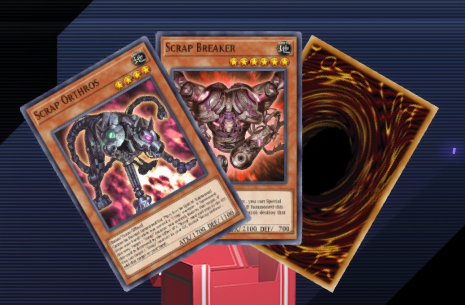
scrap breaker and scrap orthos both can be special summoned if you already have a scrap monster on the field, but both also then require a scrap monster to be destroyed. orthos, while it has lower attack, is typically more useful for this as a level 4 tuner, since it also activates a secondary effect to return a card to the hand from the graveyard when it’s destroyed, something that scrap breaker lacks. orthos is definitely worth including! it can create easy combos with scrap searcher’s effect, allowing you to easily bring out wyvern.
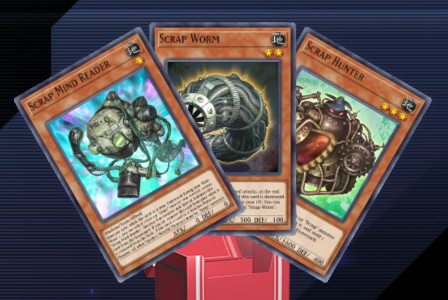
scrap mind reader can destroy another card to summon itself from the graveyard, but this effect is limited to main phase 2, meaning you cant get much out of a combo with it that turn. it could be used to put you over the edge to summon atomic scrap dragon and interfere with your opponents gy strategy, but scrap searcher is much easier to use for this purpose and can be used in main phase 1. scrap hunter can destroy any other 1 scrap monster on the field to send a tuner to the graveyard from the deck, but this is ultimately a less effective version of scrapstorm since it requires hunter and another monster on the field in the first place. scrap worm is a level 2 tuner and can attack directly, but is destroyed when the battle phase ends if it attacked; this has limited utility, since even if you make use of this destruction in a combo, your battle phase is already over, similar to the problem with scrap mind reader.
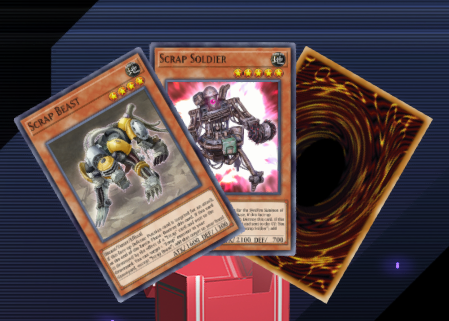
scrap soldier and scrap beast are the odd ones out in the archetype. they both have the effect whereby they are destroyed at the end of the battle phase if targeted in defense position, like goblin, but unlike goblin they can still be destroyed by battle in the first place, which doesn’t trigger their effects; in addition, they both have low defense in the first place, and their effects only add a scrap monster in your gy back to your hand. soldier is considerably worse due to requiring a tribute, making it even more of a dead draw than golem which can immediately resummon the monster used as its tribute. without its effect, beast offers the same as orthos and raptor on the field; a level 4 tuner with decent but still mediocre attack.
scrap recycler is, bizarrely, better OUTSIDE the scrap archetype than within it, as it’s limited to only working with machine-type monsters; only breaker, hunter, and mind reader are machine-types within the scrap archetype, and only mind reader has any benefit to being in the graveyard. in addition, since its secondary effect targets ONLY level 4 earth machine monsters, it can’t actually trigger this effect in a pure scrap deck. it would probably be ideal for a trains xyz deck.
THE SPELLS
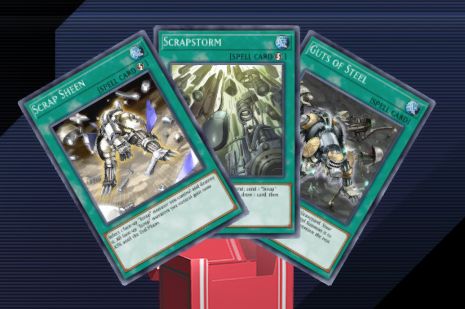
and now the spells! scrap sheen (+1000 attack to all scrap monsters currently on the field for the turn) and scrapstorm (one scrap card to the graveyard + draw 1 card), as quick play spells, can be chained with scrap effects that require the destruction of another card, such as scrap orthos or scrap breaker, to target the monsters being destroyed. this gives you the benefit of that quick play spell but DOESNT require the target of breaker or orthos to be changed to another card still on the field, effectively giving you both benefits for free since that card would have been destroyed anyway. you can even chain multiple copies of sheen and scrapstorm targeting the same monster, since they aren’t limited to once per turn in any way.
HOWEVER, it should be noted that under certain circumstances, this will prevent effects that trigger when a scrap monster is destroyed on the field from occuring, including both factory and searcher; both are considered to have ‘missed the timing’ if another card is chained after them. a single use of scrapstorm that sends searcher to the graveyard will allow you to trigger both factory and searcher off the destruction of the single scrap monster, BUT if you chain scrapstorm as a quick-play while another effect, such as scrap orthos, is being triggered, factory and searcher will not resolve and you won’t get their effects. note that you do still gain the benefit of the quick-play spell in this scenario.
guts of steel is a very risky approach, as it lets you choose three monsters in your graveyard, then banishes two monsters from the graveyard in exchange for one of your opponents choice; it’s also a normal, non-quickplay spell. usually, there are simply better options you can take, such as using the effect of scrap wyvern to bring back your desired monster in exchange for destroying your set guts of steel, at no extra cost. i dont recommend including this spell.
TRAP CARDS!
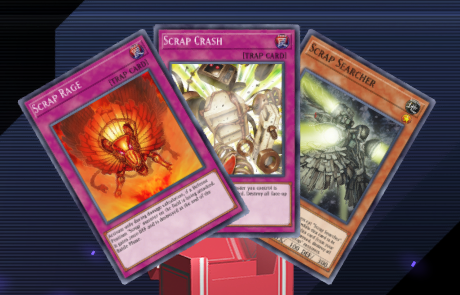
finally, the two trap cards of the archetype, scrap crash and scrap rage, which are situational at best. scrap crash is easily more promising on paper, triggering whenever a scrap monster is destroyed by any means (including your own effects) and responding by destroying all face up spells and traps, making it potentially suitable for playing defensively against a well-prepared board. scrap rage is more limited, only activating during damage calculation and granting 2000 defense to a scrap monster at the cost of that monster being destroyed when the battle phase ends. this could effectively turn any card into scrap goblin against a swarm, or blunt the effects of something like a blue eyes chaos max dragon. ultimately, while effective in their own rights, there are usually simply better and more applicable options for trap cards in the deck. there’s no real reason to run these as opposed to, say, mystical space typhoon or book of moon, or other quick play spells.
WEAKNESSES AND CONCLUSION
so, that’s the scrap archetype: a chaotic mess of mismatched effects from multiple eras of the games history going back over a decade, which all comes together to form a surprisingly fun and effective deck, which at the very least is on-point for its aesthetic. once you get used to its quirks, it turns duels against more popular archetypes into a puzzle of figuring out precisely what sequence of effects will let you slip through their defenses and win the game.
More Guides:
- Yu-Gi-Oh! Master Duel: Dogmatika Punishment Generic Targets
- Yu-Gi-Oh! Master Duel: 10 Best Vampire Cards
- Yu-Gi-Oh! Master Duel: Metaphys Guide
- Yu-Gi-Oh! Master Duel: Sylvans Guide
- Yu-Gi-Oh! Master Duel: Kozmo Guide
